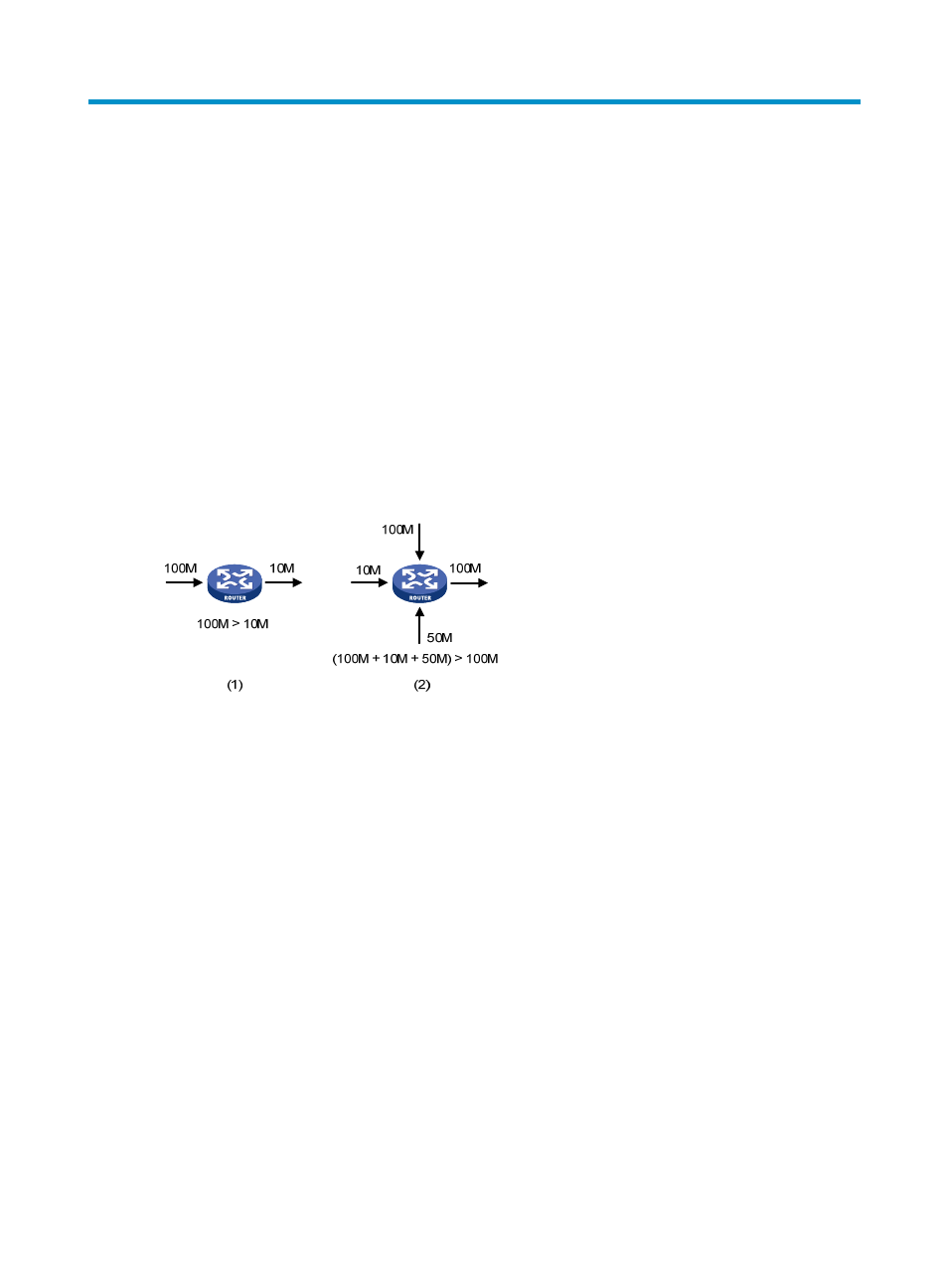Configuring hardware congestion management, Overview, Causes, impacts, and countermeasures – H3C Technologies H3C S12500 Series Switches User Manual
Page 53: Congestion management techniques

44
Configuring hardware congestion
management
Overview
Causes, impacts, and countermeasures
Network congestion degrades service quality on a traditional network. Congestion is a situation where
the forwarding rate decreases due to insufficient resources, resulting in extra delay.
Congestion is more likely to occur in complex packet switching circumstances.
shows two
common cases:
Figure 10 Traffic congestion causes
Congestion can bring the following negative results:
•
Increased delay and jitter during packet transmission
•
Decreased network throughput and resource use efficiency
•
Network resource (memory in particular) exhaustion and even system breakdown
Congestion is unavoidable in switched networks and multi-user application environments. To improve the
service performance of your network, you must take some proper measures to address the congestion
issues.
The key to congestion management is how to define a dispatching policy for resources to decide the
order of forwarding packets when congestion occurs.
Congestion management techniques
Congestion management uses queuing and scheduling algorithms to classify and sort traffic leaving a
port. Each queuing algorithm addresses a particular network traffic problem, and has a different impact
on bandwidth resource assignment, delay, and jitter.
Queue scheduling processes packets by their priorities, preferentially forwarding high-priority packets.
This section describes in detail Strict Priority (SP) queuing, Weighted Round Robin (WRR) queuing, and
Weighted Fair Queuing (WFQ).
